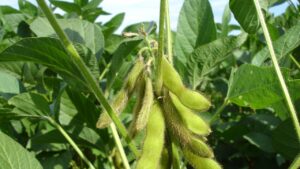Plants are damaged when they receive too much sunlight. Researchers from Wageningen and Lithuania have discovered how the internal protection system works that helps plants prevent the damage from these overdoses. The discovery could prove important for crop yields in the future.
Green plants have an effective method of capturing and processing sunlight. The plant diverts the absorbed photons (light particles) to an internal processing unit, the reaction centre, where a series of chemical reactions convert the energy into electrons and protons needed to produce molecules like sugar. In bright sunlight, however, the reaction centre is unable to process the electrons and protons it produces quickly enough. This can damage the plant severely, whereby so-called free radicals cause chemical damage to proteins and lipids, causing tissues to die off.
To prevent the next absorbed light particle from being sent to the reaction centre before the previous one has been completely processed, plants deploy various protection mechanisms that convert some of the absorbed light into harmless heat.
Protection against overdoses of sunlight
Professor of Biophysics Herbert van Amerongen and his research team explain their spectacular discovery of how this system works (the NPQ photo protection system) in Nature Plants.
To activate this protection system, the plant triggers various enzymes. This effect lasts some tens of seconds to several minutes. In fluctuating light, for example when leaves are blown by the wind, it can result in costly energy losses. The importance of the moment of activating and deactivating the protection was demonstrated by researchers in the US one and a half years ago. They showed how modified tobacco leaves, of which the activation and deactivation process had been sped up considerably, produced up to 15% more biomass.
Plants respond faster than expected
The research team from Wageningen’s Laboratory of Biophysics and their Lithuanian colleagues have discovered that an important part of the activation process is much faster than expected. Although the activation process initially lasts tens of seconds, once the protection has been activated the system can respond to the state of the reaction centre almost instantaneously.
Limited energy loss
If the reaction centre is still processing the previous bundle of energy, a new incoming bundle is converted into heat; but if the reaction centre is available, then a much smaller fraction is converted into heat and so the energy losses are limited.
Photosynthesis 2.0
WUR is currently working on a new research proposal together with 51 other institutions from 17 EU countries: Photosynthesis 2.0. By 2050 we will need to be able to produce enough food for ten billion people. This means that we will need to produce twice as much to guarantee food security. But how do we do this without exhausting the earth’s resources?
The results of Professor Van Amerongen’s research demonstrate that the commonly accepted photosynthesis models are incorrect and that plants use light more efficiently than was previously thought. This discovery is a starting point for new insights to increase production by means of photosynthesis. This does not only concern food crops, but also less obvious plants and other organisms that photosynthesize.
For example, there is evidence that this protection mechanism is less effective in algae and microalgae. ‘Improving’ these organisms by introducing this mechanism to their photosynthesis system could provide opportunities to use these ‘crops’ more effectively for bio-energy and useful chemical products.
Source: Wageningen












